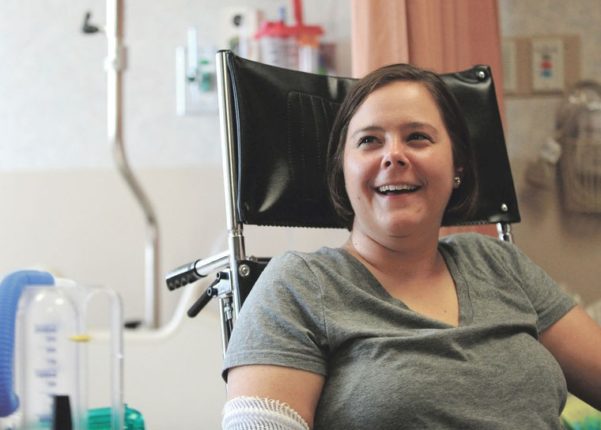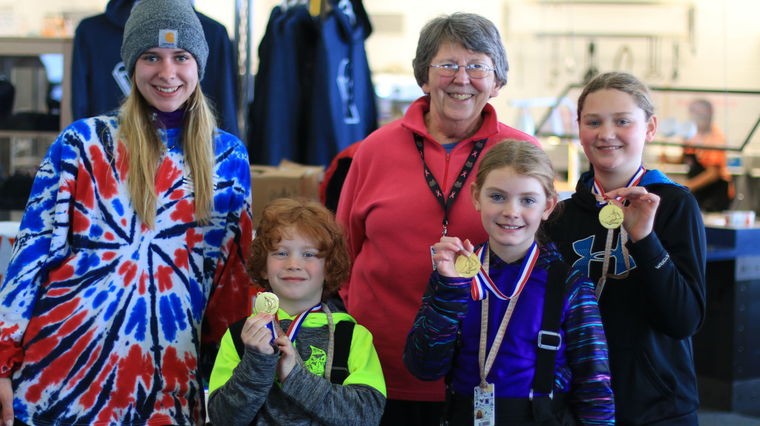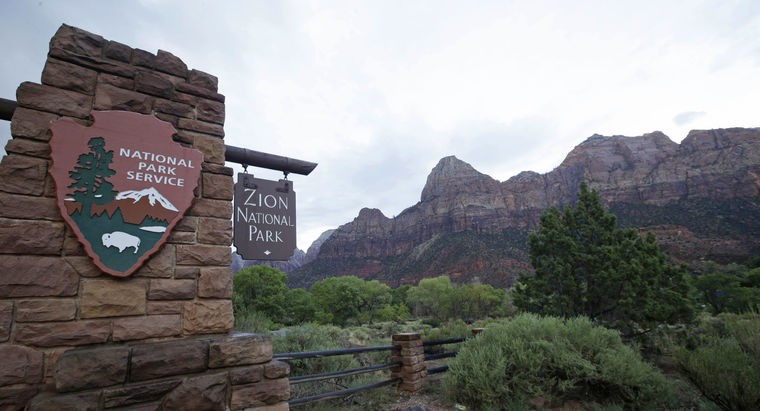On Sunday, Jan. 28, three snowmobilers went missing near Keg Springs in Island Park.
By 1 a.m. on Tuesday, Jan. 30, all three men had been safely returned to their families. Fremont County Search and Rescue, Clark County Search and Rescue and local volunteers were responsible for ensuring that Jeremy Richman, Tyler Muir and Jayce Davison all lived to see another day.
The three men were first reported missing late Sunday afternoon, and Fremont County Search and Rescue began to assemble their crews at a command area near Keg Springs.
As searchers combed the mountains for the lost snowmobilers, darkness and avalanche danger caused the rescue efforts to be put on hold until the following morning.
That was when Brent Willsey decided he needed to help.
Willsey, one of the snowmobilers who assisted in rescuing Jayce Davison, had been at home Monday morning when a friend called him who knew the three missing men.
“I got called by one of my good friends who is good friends with Jeremy Richman and Tyler Muir on Sunday,” Willsey said. “He filled me in that they had gone riding on Sunday and they were still missing. He was super worried, so I started calling the Clark County Sheriff’s Office guys that I know.”
Willsey has relatives that are members of local law enforcement and has been involved in a few previous snowmobile rescue efforts. He’s part of a group of riders that regularly use the Keg Springs area for winter recreation and understands why it can be a dangerous place. When he learned that no progress in the search had been made by Monday morning, he chose to act.
“I called my buddies that I ride with all the time,” he said. “I told them, ‘Let’s get our stuff together and head up to the parking lot. We probably won’t be able to do anything so we’ll bring food and water to the backcountry guys who have been there all night.’”
By Monday morning Clark County Search and Rescue had joined forces with Fremont County Search and Rescue. Clark County Sheriff Bart May said he had his resources operating under the command of Fremont County.
“The initial call came in to Fremont County, and they came out first and searched for a while,” May said. “We got notified about midnight on Monday morning. I called my Search and Rescue, and by the time mine got out there we set up a plan to do a joint search with Fremont County, and we were going to meet them at their command post.”
The mountainous area where the three snowmobilers had gone missing was close to the Fremont-Clark County border. May said both crews knew of the area, but their knowledge wasn’t intimate.
“We went ahead and allowed Fremont to more or less run the reins of the search,” he said.
When Willsey arrived with his friends Broc Genta, Clint Beehler, Quinn Benson and Tanner Landon at the command center, a parking lot off of Kilgore-Yale Road and Keg Springs Road, he arrived to good news. Muir and Richman had been found and were being taken off the mountain.
“We were told that they had got Jeremy and Tyler and they were on the way to getting Jayce,” Willsey said. “We thought maybe should we turn around, but decided since we were sort of friends we’d go for moral support and give stuff to the guys who’d been working there all night and day.”
Richman and Muir had spent the night on the mountain with Davison after one of their snowmobiles had broken down. The two went together Monday morning to travel down the mountain in hopes of finding cell phone reception so they could call for help. They managed to contact Richman’s father and reach the Fremont County Search and Rescue crews who had resumed their search. Davison, however, remained on the mountain, unaware that his friends had been rescued.
As the day dragged on, it became clear to Willsey that Davison still hadn’t been located. Fremont County Search and Rescue then decided to send a group of nine snowmobilers up with Muir, who might be able to retrace his path from that morning and find the site where he, Richman and Davison had made camp the night before.
Willsey said Fremont County Search and Rescue declined to accept his offer to help, citing liability issues if anything happened to Willsey’s group of volunteers. He said it was understandable since they didn’t know him or his experience in that area, so he turned to May, who approved of Willsey’s help.
“I told Bart May that I didn’t know the Fremont guys, but we were ready to go, and we ride this stuff every week,” he said. “We know Keg Springs, and the guys we have with us are the best of the best. He wouldn’t have to worry about us or babysit us.”
May said he had earlier told Willsey and his group that they didn’t have to be there and that they could go home, but when Willsey said he was ready to head up the mountain, May realized that there was an advantage to having them come along.
“When they (the search group) readied to leave our camp, these five men came over and asked to go up but Fremont County said they couldn’t because they weren’t affiliated,” May said. “No matter how good your search and rescue crews are, the best thing you have is experience, including knowledge of the area, which these guys have. I told the Fremont County commander that these guys were a part of my crew as far as I was concerned, and I was allowing them to go up anyways.”
And with that, Willsey, Muir and 13 other snowmobilers rode up to the top of the mountain on a mission to spot out where Davison might be located, with orders to observe and then return to command.
Willsey said that when they got to the top, the situation began to change.
“We got out there, though they (the rescue officials) weren’t sure where they were going,” he said. “We went on the ridge where people usually ride. Tyler was trying to show us where they might have gone, but he was mentally and physically drained.”
The group observed that it was very likely that Davison was located in a ravine below them, and Willsey said he believed that it was possible to launch a rescue attempt immediately.
“We were all discussing how we were going to get down there,” he said. “We sent our GPS coordinates back to command. My thoughts were we could get down to Jayce without a doubt, but I didn’t know how to get him out.”
Willsey said the leader of the group told him and Landon to go down and check out the terrain. Even though this contradicted earlier orders from Search and Rescue command, May defended the group’s decision.
“What we see in the command center is different than what they see on the mountain,” May said. “They said, ‘Hey, let’s send five guys off of this ledge and see if they find anything.’ The five they sent there was the five who go up there all of the time.”
Willsey and Landon rode the descent in their snowmobiles, checking for signs of Davison. Benson, Beehler and Genta also looked for ways to get down to the ravine, staying in touch with Willsey via radio. The five riders didn’t have a search and rescue radio, which Willsey regrets in hindsight.
“Avalanche danger was really bad,” Willsey said, adding that though he couldn’t contact command, he was able to stay in touch with his fellow riders, one of whom had a GPS transmitter that could send text messages and location coordinates back to base.
Soon Willsey’s group spotted tracks that had belonged to Richman’s and Muir’s snowmobiles. At that point a decision had to be made about whether to press forward and see if they could find Davison themselves or return to command and report what they had found. They also had to ask themselves if risking their own lives to find Davison was worth it.
“Tanner and I sat there and had a heart-to-heart,” Willsey said. “We thought about what we were getting ourselves into, that it was getting dark and that we didn’t really know the kid who was back there. On the other hand, we both felt we were doing the right thing, and we didn’t think anyone else was going to get this kid.”
The group made contact with the rest of the party on the mountain, informing them that they were going to follow the tracks in hopes of locating Davison.
“Time was not on our side,” Willsey said. “This was way too late. This all should have happened in the morning. Sunset was at 5:29, and by the time we went in, it was almost dark.”
The group proceeded carefully, riding over avalanche slides and keeping a lookout for signs of Davison. Eventually they began to smell smoke from the fire that Davison, Muir and Richman had lit the night before. Within minutes, they came across Davison in his camp.
“Jayce was bawling,” Willsey said. “We knew we had made the right decision.”
Genta immediately began sending their GPS coordinates back to command while the group gave Davison food and water. Willsey and Landon then began looking for a way to get everyone out of the ravine.
“There was no way we could go back up,” Willsey said. “Keep in mind, we didn’t know how to get out. We knew the direction we needed to go but couldn’t figure how to get out there.”
The group had learned from the Search and Rescue crews earlier that the path that Richman and Muir took to get out took them to Red Rock Road, though they didn’t know how to get there from Davison’s camp.
Willsey and Landon resumed following Richman’s and Muir’s tracks over a nearby ridge until the path was too dark to follow, making it difficult to determine what terrain was safe to cross in the avalanche-prone area.
“We were figuring it all out and then we heard the helicopter,” Willsey said. “The group had Jayce all ready to go for when the helicopter could land, but it was a 30-degree slope, and the snow was sinking up to our knees. The helicopter made it about 30 feet to the ground and couldn’t go any lower. They tried again a few times but had to go away.”
The helicopter, sent by Search and Rescue command, was supposed to attempt to lift Davison out of the ravine and back to safety. Willsey said that he wished that could have happened, since without the helicopter, he would have to have Davison ride double with another snowmobiler, which he said is very dangerous.
Instead the helicopter dropped a bag of food, water and dry clothing for Davison to use to help him make it through the night. Willsey’s group decided that since it was impossible to find their way out in the dark, they would stay with Davison.
“When the helicopter flew away, we took a knee and said a prayer,” Willsey said. “We definitely had help and were watched over. We decided to stay the night and let base camp know that once daylight came, we were out of there.”
Willsey said it was a good time for the group to take a break, since they were cold and wet from the day on the mountain.
“We built a windbreak and got the fire going hot,” he said. “Jayce was good, and we had plenty of food and water. The worry was that our wives and families didn’t know we were fine, but we sent messages back and forth on Brock’s GPS to command to let them know.”
The group was prepared to settle in for the night when they spotted lights coming towards them through the trees in the direction of Red Rock Road.
“Soon we could see flashlights in the trees coming towards us, coming from the way we knew we needed to get out,” Willsey said. “We went down and picked them up.”
The lights were from two snowshoeing members of Fremont County Search and Rescue, bearing the good news that Davison’s camp was only about a mile away from the the top of Red Rock Road. Davison was then asked if he wanted to snowshoe out with the Search and Rescue, shortening his stay on the mountain.
Willsey said Davison wanted to stay, but the group insisted he go with Search and Rescue so he could go home. Davison agreed and headed out with the snowshoers. He and the Search and Rescue members soon reached Red Rock Road, where they got into a Fremont County vehicle and drove back to command.
After giving them a 30-minute head start to avoid trampling them in the dark, Willsey’s group left the camp and began riding down to Red Rock Road.
“It was scary, and that snow was breaking loose and sliding even when we weren’t touching it,” he said. While waiting with Davison earlier, the group could hear avalanches coming down and knew extreme caution was needed.
Soon the group reached Red Rock Road, where they then rode the 20-mile groomed snowmobile route back to the command post.
“In the end we were happy since we didn’t have to ride doubles. We knew how to get out of there, and we knew we were going to get home that night,” Willsey said.
Back at command, May said there was some confusion as to what was happening on the mountain with Willsey’s group. He said their efforts to recover Davison resulted in a happy ending, but it could have easily been otherwise.
“They said there was a bunch of slides that came out in front of them, but they came out OK,” May said. “If they got buried it would have been a different story. When we look back on what could have happened, what they did could have put more lives in danger.”
May said he could tell that the Fremont County Search and Rescue commanders were upset with Willsey’s group because both parties didn’t know exactly what the plan was. He said that type of miscommunication had occurred more than once during that day, and that it was obvious things could have been better.
“I think Fremont’s mad because they weren’t affiliated with Fremont County, but they went,” he said. “I talked to the sheriff and took responsibility.”
At the same time, May said he knew it was a good call to get Davison off the mountain that night. May said he spoke with Davison at command after he was rescued, who told May that he was determined that he was going to hike to safety alone instead of staying another night on the mountain by himself.
“When I interviewed him, he said he was very, very emotional,” May said. “He was thinking he could hike out of there on his own. That’s a scary mindset to be in.”
It was that communication error, along with Willsey’s group not having any search and rescue radios and everyone’s lack of knowledge of what was happening, that caused friction between the different search and rescue teams.
“We didn’t know if the GPS texts were being sent to the right people,” Willsey said. “If the communication was there, there would have been no problem. I think Fremont County thought we were just some group of guys trying to be heroes. No one is to blame, though. They learned a lot from it, and they were out there risking their own lives just as we were.”
May said that since the rescue of the three snowmobilers, he’s been in contact with Fremont County Sheriff Len Humphries about what happened and how communication could be improved.
Humphries declined to comment on the communication strains between search and rescue parties, having already given updates about the missing snowmobilers and the fact that the rescue effort was successful.
“The people are home safe — that’s the bottom line,” he said. “It’s past history. Let’s move on.”
The Standard Journal attempted several times to contact Fremont County Search and Rescue, as well as the three snowmobilers. No calls or messages were returned.
Regardless of what happened, everyone is home safe, said Willsey.
“At the end of the day, all that matters is that he’s out and we’re all good,” he said. “It went the way it needed to. Doing what’s right isn’t always popular and is hard.”









